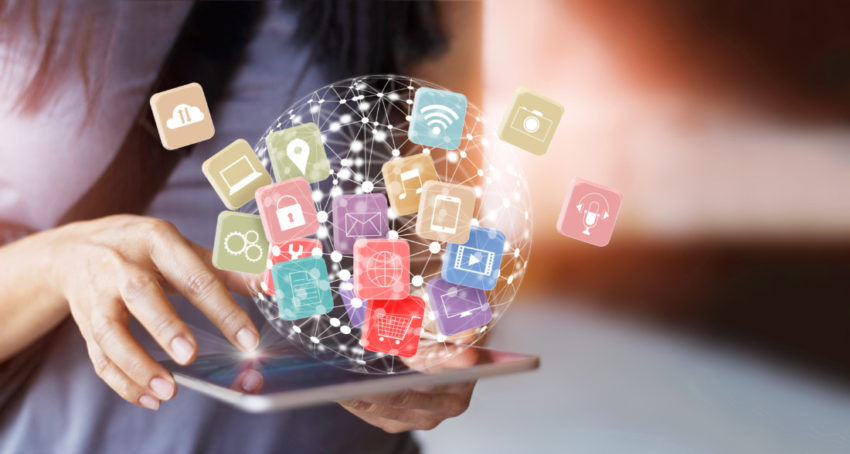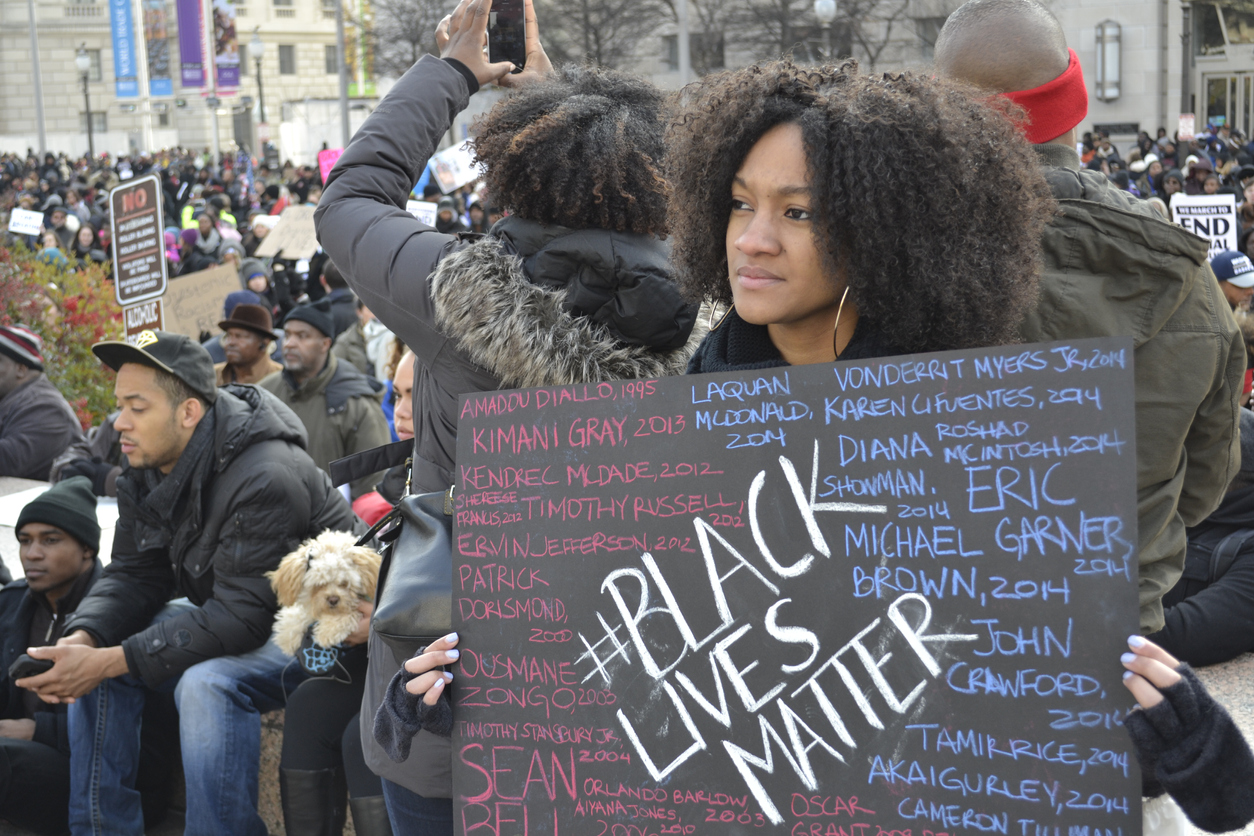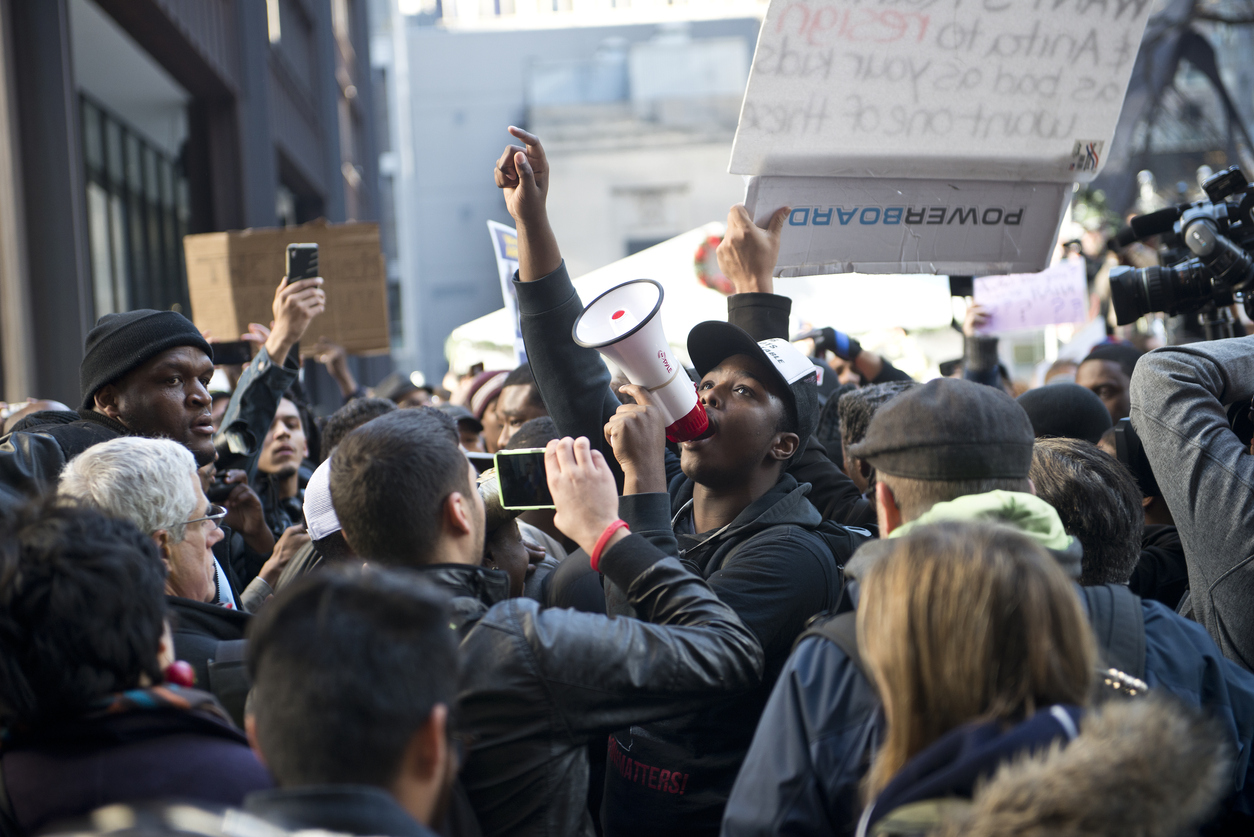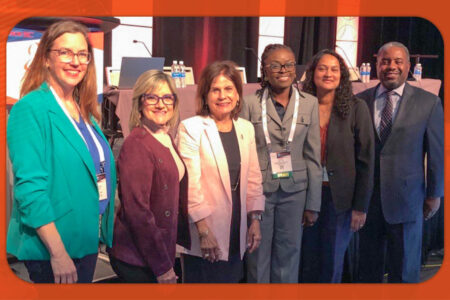
Share On Social!
This is part of the Salud America! Achieving a Cohesive Culture for Health Equity in Latino and All Communities: A Research Review»
Social Media and Social Justice
While much has been said about the detrimental effects of social media on relationships, it is also clear that social media can be used to bring people together, and to bring about social change.
The #BlackLivesMatter movement began on Twitter in 2016 after the acquittal of George Zimmerman for the shooting death of Trayvon Martin. It has reached and engaged millions of people across America, becoming an organization with chapters in more than 30 cities across the United States.
The death of Trayvon Martin, and the subsequent deaths of Michael Brown, Freddie Gray, Breonna Taylor, and others at the hands of police, illustrated that traumatic events often lead to social sharing and seeking of support, in this case leading to the growth of a movement that strives to end systematic racial inequality against blacks and people of color.98
 Following the death of George Floyd at the hands of police in May 2020 and a rise of protest for social and racial justice, about 66% of U.S. adults said they support the Black Lives Matter movement, according to a 2020 Pew Research Center survey. This sentiment reverberates across race/ethnicity groups, with most Blacks (86%), Latinos (77%), Asians (75%), and even Whites (60%) expressing they strongly or somewhat support the movement.8 The same Pew survey also found that “37% of those who use social networking sites say they have posted or shared content related to race or racial equality on these sites” in the past month.8
Following the death of George Floyd at the hands of police in May 2020 and a rise of protest for social and racial justice, about 66% of U.S. adults said they support the Black Lives Matter movement, according to a 2020 Pew Research Center survey. This sentiment reverberates across race/ethnicity groups, with most Blacks (86%), Latinos (77%), Asians (75%), and even Whites (60%) expressing they strongly or somewhat support the movement.8 The same Pew survey also found that “37% of those who use social networking sites say they have posted or shared content related to race or racial equality on these sites” in the past month.8
Movements have also been created to address inequity in the U.S. and worldwide, including the Occupy movement, a sociopolitical movement against social and economic inequality that incited hundreds of occupy protests around the world. Information was spread using various forms of social media, including a blog called “We are the 99 Percent,” where people shared stories of economic struggles. Similar democratic movements began on social media during the 2008 and 2012 Obama campaigns, as well as smaller movements such as Rebuild the Dream, an anti-Tea Party movement with goals of fairer tax rates and fair pay, better public education, and Medicare for all.99
Social Media and Connection
Social media has the ability to empower and connect.
In 2009 and 2010, in response to the continued deportation of youth eligible for the Development, Relief, and Education for Alien Minors (DREAM) Act, Latino youth took to social media to mobilize and organize sit-ins in Congressional offices, marches, and symbolic graduations. An online undocumented youth advocacy group called DREAM Activist was formed, and in 2009, the founders of the group organized 500 youth to participate in the National DREAM Act Graduation in Washington, D.C., a symbolic graduation ceremony for undocumented Latino youth. At the same time, solidarity graduations took place in 12 states. On New Year’s Day 2010, four undocumented students from Miami-Dade College set out on a 1500-mile march from Florida to Washington, D.C. to advocate for the DREAM Act; they called their trek the Trail of DREAMs, and documented their journey via blog, Facebook, YouTube, and Twitter posts. Along the way, they collected 30,000 signatures in support of the DREAM Act to deliver to President Obama when they arrived.100
Social Media and Advocacy
Social media platforms are also important tools for advocacy groups.
Obar et al.101 conducted a survey of 169 representatives from 53 advocacy groups, inquiring about social media use and general perceptions about social media, including the use of social media for civic engagement and collective action. Most of the participants responded that social media is useful in strengthening outreach efforts. The National Hispanic Coalition noted that a social media presence helped to increase exposure, and the National Council of La Raza, the largest civil rights group for Latinos, remarked upon the opportunity to reach and educate new people and turn those people into engaged voters. The groups also linked speed of communication with a heightened ability to put interests into action, with the National Council of La Raza stating that social media helps them mobilize groups quickly.101
 In a review of available research on media and communications and their effect on identity-based violence and violent extremism, Ferguson102 found that most of the current literature is focused on countering violent propaganda with a positive alternative; the author found no definitive evidence that counter-narratives are effective in disassembling violent extremism. There is evidence, however, that alternative media approaches may have some effect.
In a review of available research on media and communications and their effect on identity-based violence and violent extremism, Ferguson102 found that most of the current literature is focused on countering violent propaganda with a positive alternative; the author found no definitive evidence that counter-narratives are effective in disassembling violent extremism. There is evidence, however, that alternative media approaches may have some effect.
Radio and television dramas that address the issues of identity, reconciliation, and tolerance, for example, have been shown to positively impact behavior and attitudes, and seeing an ingroup member share a platform with an outgroup member has been shown to positively impact understanding and tolerance of the outgroup. Ferguson notes that both trust and credibility of the media are crucial for these alternative approaches to be effective, and that the most effective interventions are those that endeavor to encourage empathy and awareness, allay misinformation, and encourage conversation rather than trying to change minds.102
Quick links from our Research Review »
See the Guide: System Justification!
See the Guide: Moral Disengagement!
More from our Research Review »
- Introduction/Methods
- Research: Poverty among Latinos
- Research: Rural Poverty
- Research: Poverty and Healthcare
- Research: Discrimination and Education
- Research: Discrimination and Outcomes
- Mechanism: Implicit Bias
- Mechanism: System Justification
- Mechanism: Moral Disengagement
- Strategy: Intergroup Contact Theory
- Strategy: Peer Modeling
- Strategy: Implicit Bias Training
- Strategy: Effective Communication
- Strategy: Social Media for Social Change
- Strategy: Building Social Cohesion
- Policy Implications
- Future Research
References for this section »
8. Pew Research Center, Gonzalez-Barrera A. Hispanics with darker skin more likely to face discrimination. Fact Tank: New in the Numbers. https://www.pewresearch.org/fact-tank/2019/07/02/hispanics-with-darker-skin-are-more-likely-to-experience-discrimination-than-those-with-lighter-skin/. Published 2019. Accessed July 8, 2020.
98. De Choudhury M, Jhaver S, Sugar B, Weber I. Social media participation in an activist movement for racial equality. Proc 10th Int Conf Web Soc Media, ICWSM 2016. 2016;(Icwsm):92-101.
99. Gamson WA, Sifry ML. The #Occupy Movement: An Introduction. Sociol Q. 2013;54(2):159-163. doi:10.1111/tsq.12026
100. Zimmerman AM. A Dream Detained: Undocumented Latino Youth and the DREAM Movement .; 2011. https://nacla.org/sites/default/files/A04406016_5.pdf. Accessed June 15, 2020.
101. Obar JA, Zube P, Lampe C. Advocacy 2.0: An Analysis of How Advocacy Groups in the United States Perceive and Use Social Media as Tools for Facilitating Civic Engagement and Collective Action. J Inf Policy. 2012;2:1. doi:10.5325/jinfopoli.2.2012.0001
102. Ferguson K. Countering Violent Extremism through Media and Communication Strategies A Review of the Evidence.; 2016. www.paccsresearch.org.uk. Accessed June 15, 2020.
By The Numbers
23.7
percent
of Latino children are living in poverty



